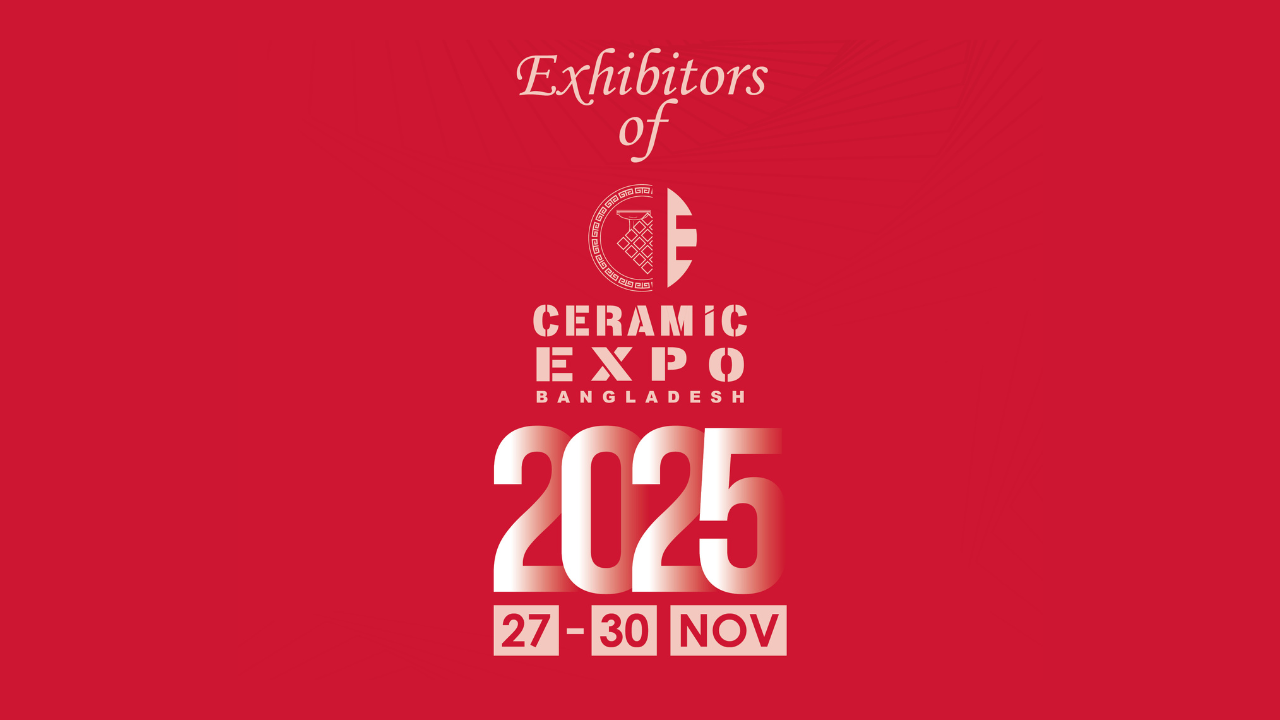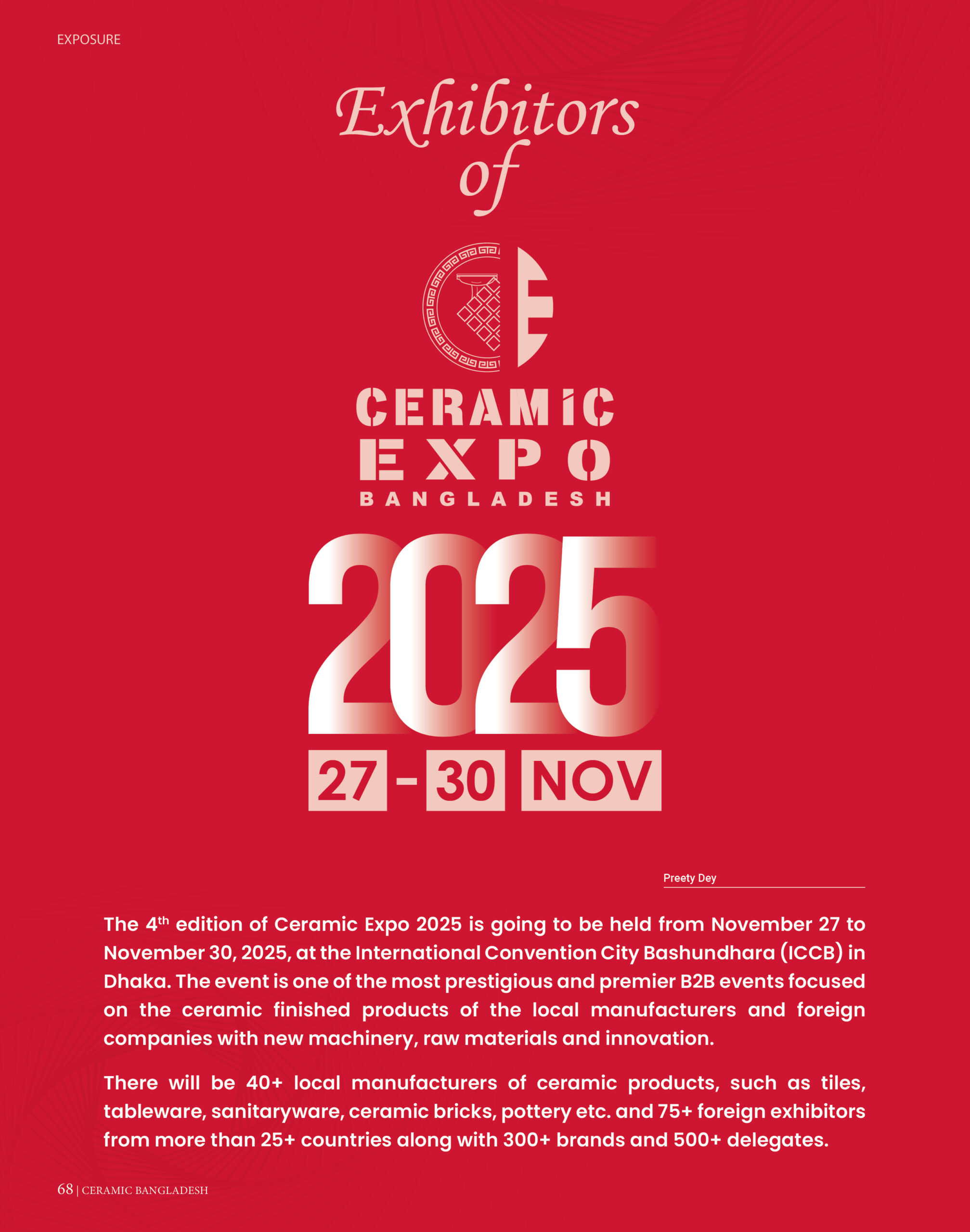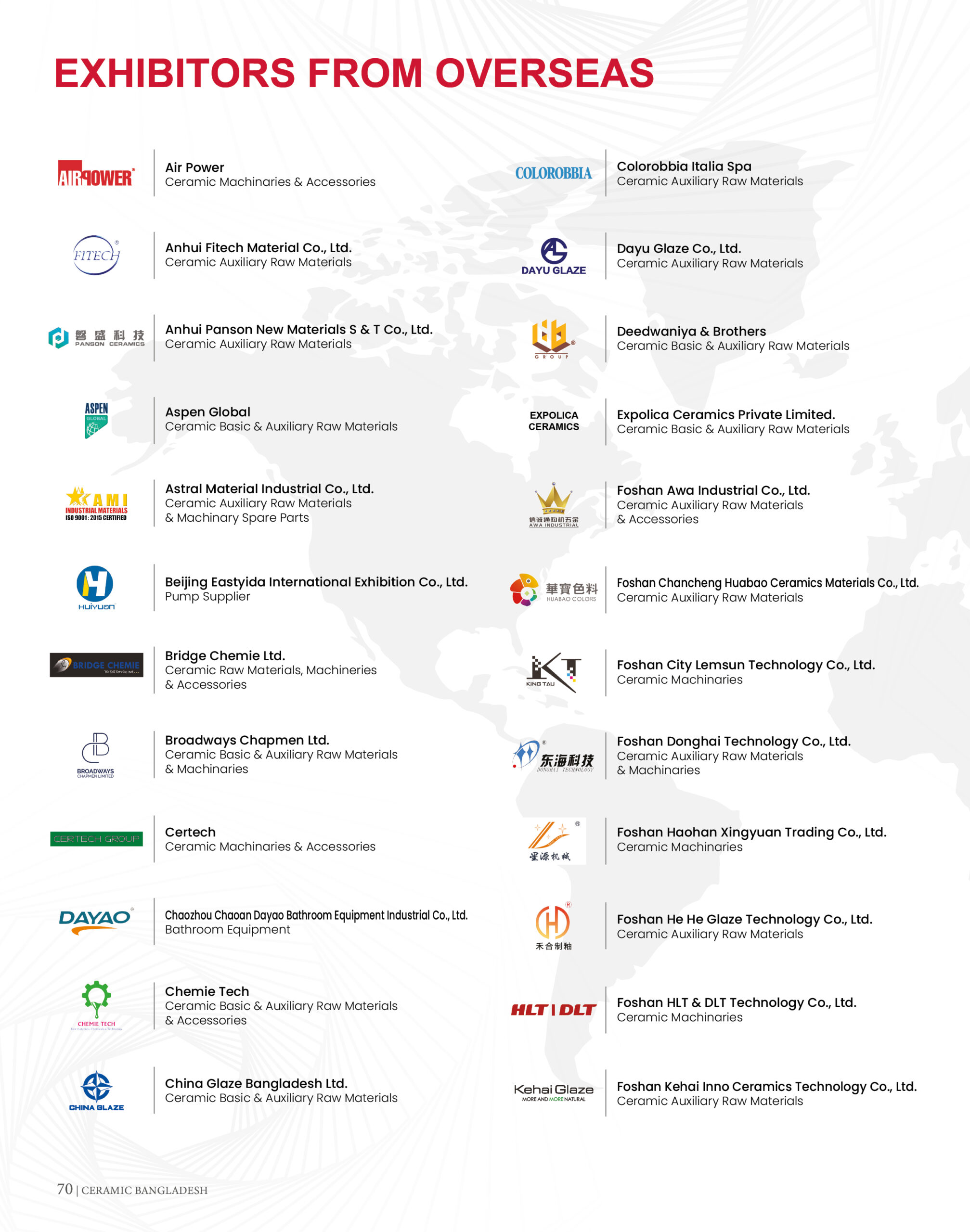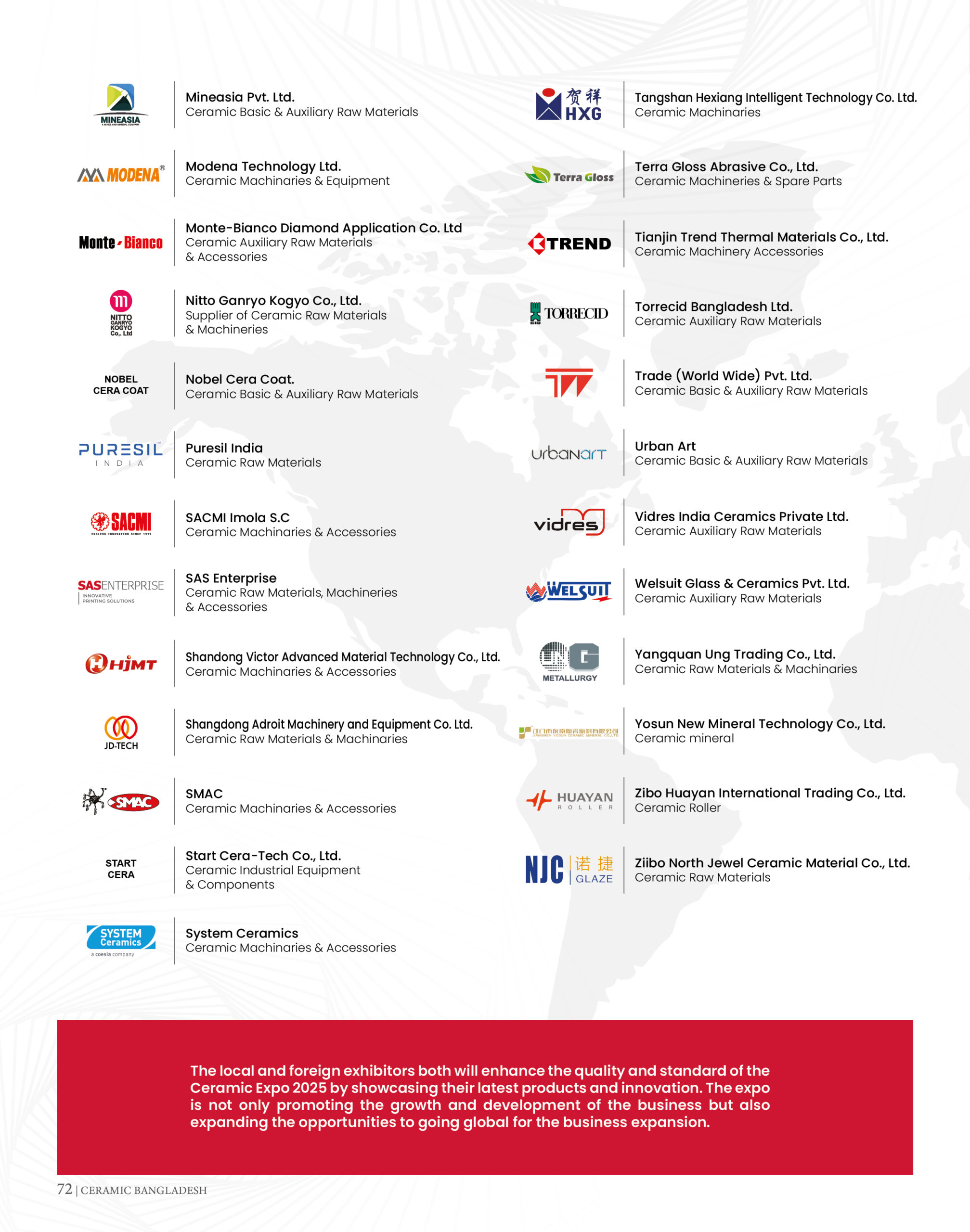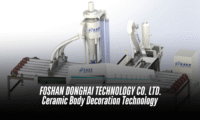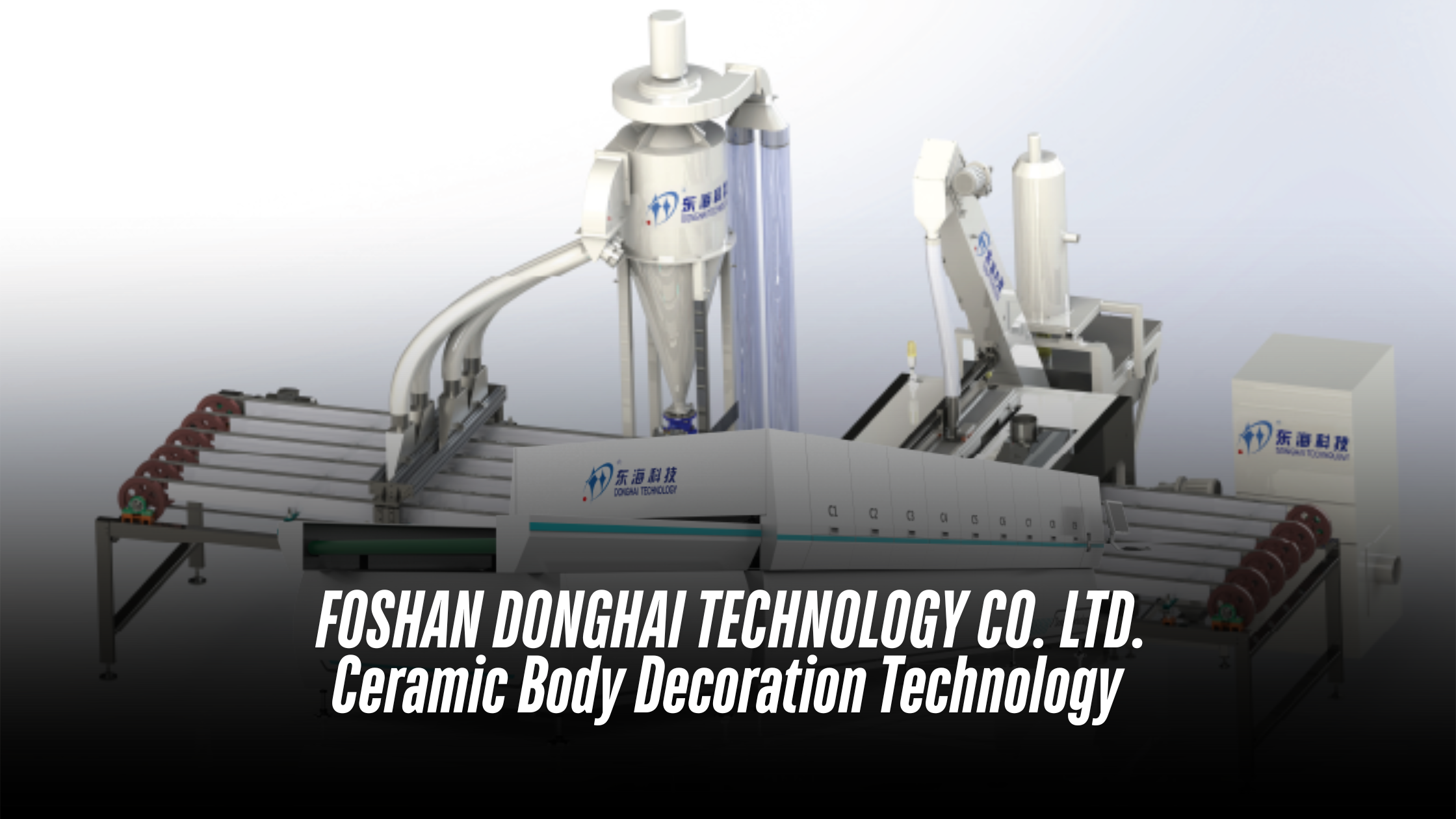
FOSHAN DONGHAI TECHNOLOGY CO. LTD. Ceramic Body Decoration Technology | Digital Powder-Jet System
Digital Powder-Jet System | Precise Alignment, Full-Body Texture Donghai Technology’s Digital Powder-Jet System is an advanced feeding technology that utilizes intelligent control systems and multi-channel coordination to impart vibrant patterns and textures. Each channel carries different colored powder, precisely applying the desired designs through digital nozzles. This advanced technology not only enhances production efficiency but also customizes to meet the diverse clients’ need, showcasing a full-body effect from the surface to the bottom. Digital Powder-Jet System’s Advantages: (1) Superior compatibility, seamless Integration with all types of press, (2) Feeding Channel from 6-12 (optional). (3) High-speed feeding, up to 10m/min, achieving both production and efficiency. (4) High precision and accuracy, with positioning accuracy controlled within 2-3mm. Ceramic Surface Decoration Technics | Dry Applicator Dry Applicator | Digital Grit, Premium Finish Donghai Technology’s Dry Applicator is a specialized equipment used for the surface decoration of ceramic tiles. It mainly through the technology of glue and dry grit. By evenly spreading various dry granular materials on the surface of the tiles, it significantly enhances the decorative effect of the tiles. Its advanced technics technology, bringing brand-new possibilities to the surface decoration of ceramic tiles. Dry Applicator’s Advantages: (1) Perfect combination with ink-jet technology, tile surface with rich effect of concave & convex. (2) Italian imported belt, precise control of grit, feeding uniformity. (3) With heating device, remove the humidity of grit during recycling. (4) With automatic recycling system, grit can be reused. (5) Provide professional process technical support, design effect can be realizable.

A Snapshot of International Ceramic Expos Worldwide
International Ceramic exhibitions are held worldwide for their distinctive ability to bring industrialists and technologists from different corners of the world into single platforms to serve the common purpose of promoting trade. The world’s most advanced technological innovations, equipment, raw materials, dynamic use of advanced ceramics and the best practices available are showcased in these international ceramic exhibitions. These exhibitions often additionally host B2B (business-to-business) meetings, seminars and conferences which result in strengthening professional networks and create further opportunities in establishing footholds in different parts of the world. Tecna – The Future of Surfaces, is an international marketplace organized at the heart of one of the most creative, innovative and technologically sound countries for surfaces, Italy. The exhibition offers the best innovations in aesthetics and processes for the sector every two years. Tecna, the international exhibition of technologies and surface supplies, is scheduled to be held at the Rimini Expo Centre, Italy, on September 27 to 30, 2022. The event is organized by IEG (Italian Exhibition Group) in collaboration with ACIMAC (Association of Italian Manufacturers of Machinery and Equipment for Ceramics). Today, numerous ceramic exhibitions are held around the world, which help display the latest materials and technologies and provide face-to-face networking and business opportunities to discuss the future challenges and opportunities facing the global ceramics industry. Tecna – The Future of Surfaces, is an international marketplace organized at the heart of one of the most creative, innovative and technologically sound countries for surfaces, Italy. The exhibition offers the best innovations in aesthetics and processes for the sector every two years. Tecna, the international exhibition of technologies and surface supplies, is scheduled to be held at the Rimini Expo Centre, Italy, on September 27 to 30, 2022. The event is organized by IEG (Italian Exhibition Group) in collaboration with ACIMAC (Association of Italian Manufacturers of Machinery and Equipment for Ceramics). Tecna represents a global meeting point for technology and innovation for the production of all types of surfaces and materials, from the most traditional to the most innovative ones. The exhibitors get the opportunity to meet national and international buyers from all sectors in the surface industry. Most participants are from Asia, Middle East, Africa, the Mediterranean Area, Europe and Latin America. CERSAIE – International Exhibition of Ceramic Tile and Bathroom Furnishings, is the foremost international event for designers of ceramic and other surface coverings and bathroom furnishings. The exhibition is due to be held at Bologna Exhibition Centre, Bologna, Italy, from September 26 to 30, 2022. The expo becomes a dynamic hub for architects or designers, retailers, contractors, installers, interior designers and even people looking to renovate homes or offices. One will get the chance to discover design ideas, architecture conferences, training events and meetings with production companies and discover the new offerings proposed by the market. The Foshan Tanzhou Ceramics Exhibition is due to be held from November 16 to 20, 2022 at Foshan Tanzhou International Convention and Exhibition Centre. The exhibition is organized by Foshan Taolian Technology Development Co. Ltd. The 5-day event will host over 400 exhibitors who will showcase the latest products, processes, and application designs. 20 heavy events will focus on the frontier hot topics of the industry. ASEAN Ceramics is Southeast Asia’s leading international exhibition of machinery, technology, raw materials and advanced ceramics. The event takes place in Thailand and Vietnam on alternate years and is organised by MMI Asia Pte Ltd, a full subsidiary of Messe Munchen GMBH (MMG). ASEAN Ceramics 2022 will take place in Thailand at IMPACT Exhibition and Convention Centre, Bangkok from November 30 to December 02, 2022. The exhibition will also host a three-day conference that would include a high-level plenary sessions and feature a series of presentations and panel discussions on topics ranging from new research on global innovations trends to their impacts on the global ceramic industry by globally renowned speakers. ASEAN Ceramics attracts over 4,000 trade visitors from close to 50 countries. The top visiting countries include China, India, Vietnam, Malaysia, Japan and Indonesia. The Highly Functional Material Week is organized by RX Japan Ltd. and has two shows, one held in Tokyo and the other in Osaka. The Tokyo show will be held from December 7 to 9, 2022 at Makuhari Messe and the show in Osaka will be held from May 17 to 19, 2023 at INTEX Osaka, Japan. The material week focuses on a range of matters, from film technology, metal, plastic, adhesion and bonding, paint and coating and also highly functional ceramics. The show will feature innovative structural materials, sustainable materials, materials for antibacterial and antiviral and materials for next-generation battery manufacturing. Indian Ceramic Asia, the 17th Edition of the state-of-the-art annual trade fair, is scheduled to be held at the Helipad Exhibition Centre, Gandhi Nagar, India, from February 15 to 17, 2023. The trade fair is jointly organized by Messe Munchen India, a subsidiary of Messe München GmbH and Unifair Exhibition Service Co., Ltd. The Indian ceramic industry has the potential to become one of the largest producers of ceramics in the world and is looking to double its turnover by 2024. This trade fair and conference for the ceramic and brick industry offers a curated platform for all leading companies to showcase their latest machinery, high-quality raw materials, analysis and laboratory equipment, storage equipment, material handling and much more. This presents the manufacturers or suppliers of raw materials or ceramic production equipment with a platform to meet new partners and clients and help their businesses grow in India. The 8th Edition of Ceramics Expo 2023, co-located with Thermal Management Expo is to be held at Suburban Collection Showplace, Novi, Michigan, USA, from May 1 to 3, 2023. The Ceramics Expo brings together engineers, decision-makers, end-user OEMs and buyers from across the globe to source new materials, components and technologies, network with like-minded professionals, and discuss the challenges and opportunities in the technical ceramics industry. The expo will also host a conference where industry leaders will share their
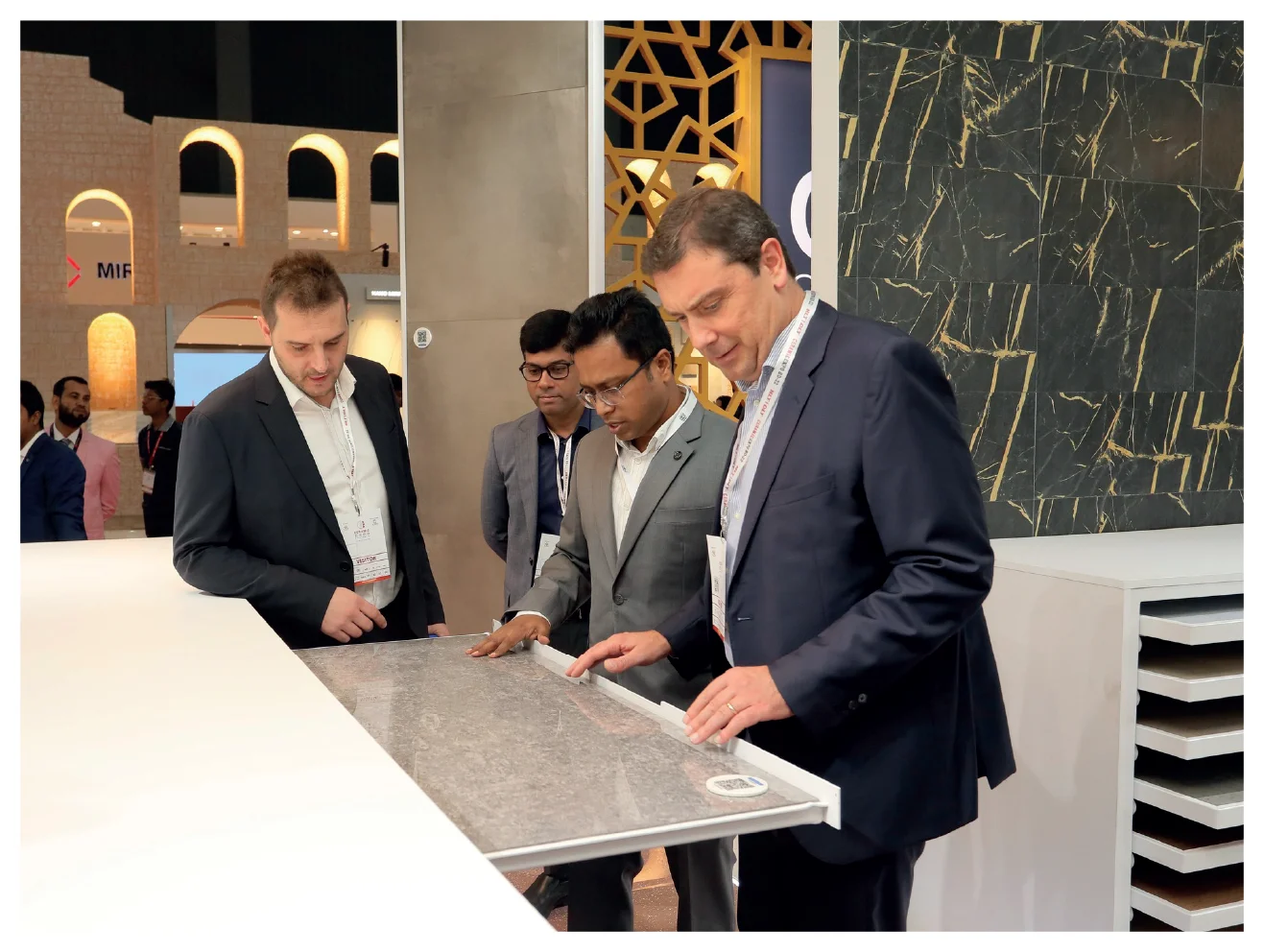
Innovation unleashed at the Ceramic Expo Bangladesh-2022
The first few teasers of the Ceramic Expo Bangladesh-2022 ushered in the forthcoming of one of the biggest and highly anticipated ceramic events in the country. The event took place in ICCB, Dhaka, from 24-26 November, 2022, and was buzzing with visitors all three days. The Ceramic Expo housed 120 exhibitors, 300 brands from 20 countries, and 500 delegates, along with a whopping 23,000 visitors. It brought under one roofexporters, manufacturers and suppliers of ceramic and related products. During the event, visitors came from all over, dispersed excitement across the venue, and filled it with murmurs of conversations. As excitement spread, we saw visitors and exhibitors interact, and the event turn into a big success.
